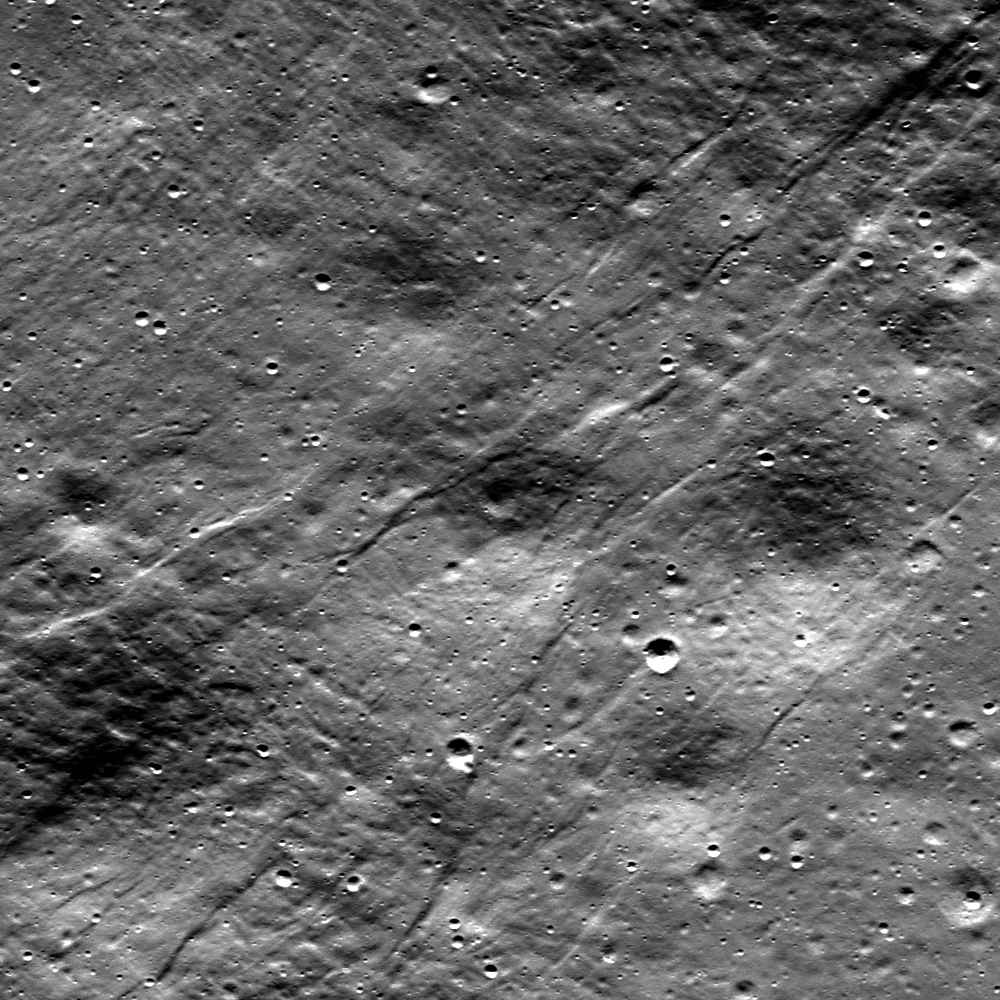
Graben on the Moon come in a variety of sizes. Some of the larger rilles in the maria stretch for several tens of km and can be a few km in width. These linear rilles are thought to be the result of extensional stresses near the edges of the maria and are thus graben. Since the mare basalts are dense, they weigh down the crust in the center of the deposit, pulling rock near the margins inward. However, the Featured Image today shows much smaller graben that span only hundreds of meters in length and tens of meters in width. To complicate matters, these graben are not in mare basalts, they are inside a crater!
The WAC context image helps us decipher the origin of these graben, as a nearby lobate scarp can be seen at this scale. Lobate scarps form in compressional stress environments as layers of rock or regolith fold and thrust upwards. The thrusting might cause nearby crust or regolith to uplift and bend. The graben and scarp are only hundreds of meters apart which argues for a compressional interpretation. Thus the interplay between compressional and extensional stresses is reflected in the distribution of tectonic features within Numerov crater. The end result is that we see small graben situated very near to lunar lobate scarps!
Explore more of the lobate scarp and graben in the full LROC NAC!
Related Posts:
Published by Drew Enns on 14 February 2013
